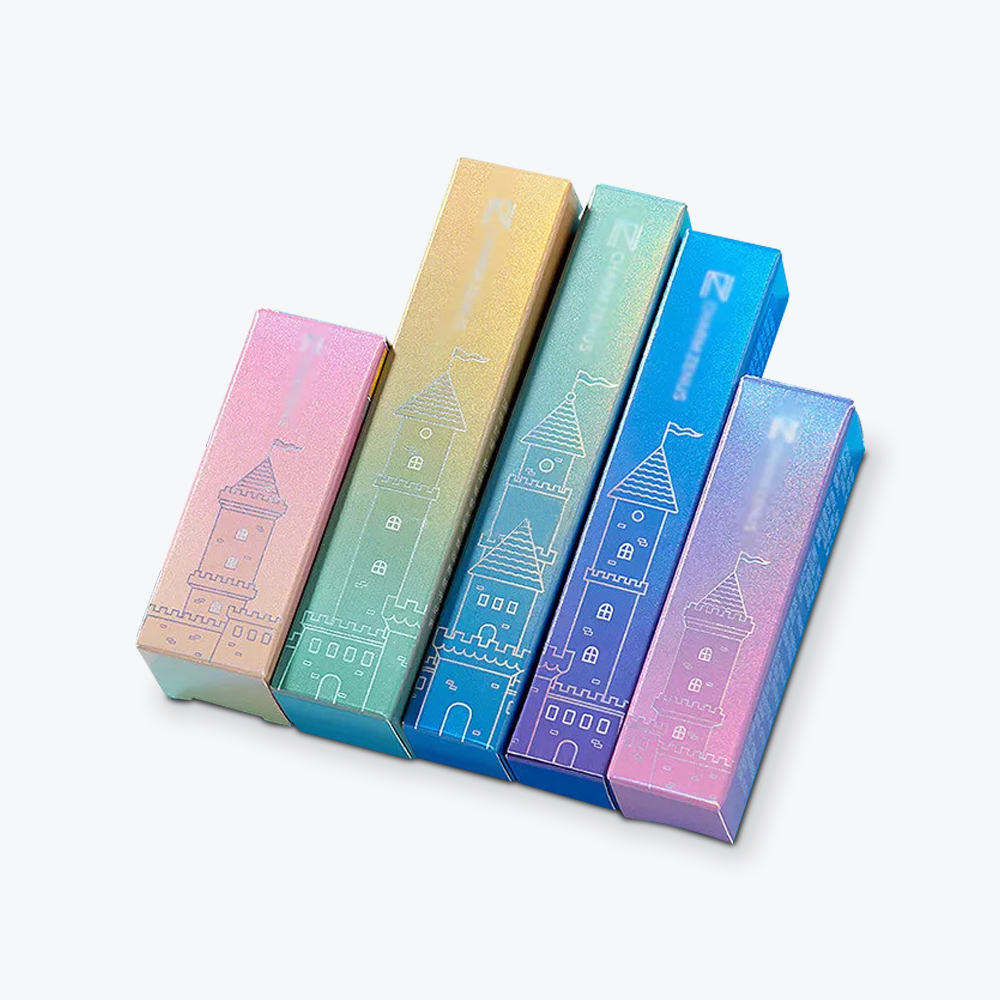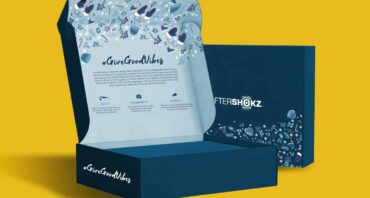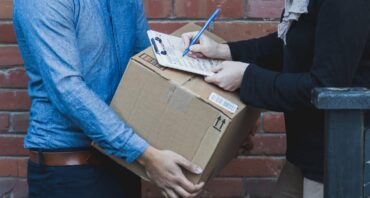Packaging designers are the secret stars behind popular brands, developing imagery and messaging that consumers love to recall and relive over and over again.
At a time when thousands of new companies—and, therefore, new products—enter the market annually, businesses rely on these experts to see their products enjoy their day in the sun. The food industry alone welcomes 15,000 new products every year.
But with so many freelancers and agencies offering their design services, how would you know who can translate your unique selling proposition (USP) onto your brand’s visual identity?
This article will discuss how you can prepare for your collaboration with a packaging designer, including the factors to consider in selecting the one who can support your goals.
Before we dive in, allow us to show you some stats for insights on the consumer market from a wider angle. The figures below show how important it is to take product packaging seriously and seek the right path toward customer-centric packaging.
Impact of Packaging on Sales
Attractive packaging design remains at the heart of the unboxing experience. According to a Macfarlane poll, branded packaging made up 59% of all boxes shipped by merchants in 2022. Moreover, 41% of respondents said that printed packaging produced memorable moments, which made them want to buy again.
The outcome of this UK-based survey reflected similar sentiments of American shoppers in Dotcom Distribution’s study. 47% of participants who bought luxury shoppers over the past year said that “visually appealing/gift-like” boxes (32%) and personalized packaging parts (15%) made them share photos or videos of a purchase. Meanwhile, 24% valued sustainable packaging that is eco-friendly and paper-based.
Project Brief: Clarifying Your Vision 
Packaging designers would ask you to share the details of your project in a project brief (also called a design or packaging brief). It lays the foundation of understanding between you and the designer or design agency by establishing your project’s purpose, scope, timeline, and budget.
The brief can take time to write, but it’s the most effective way to organize your thoughts and make the most of your meeting with your chosen designer. The document will serve as your playbook and prevent your designer from saying, “We didn’t realize or know you needed that” midway through the project.
Here are the sections to include in your project brief:
Project overview
Start the document with a short project description to help your designer envision what they need to deliver. Include the name of your brand and product, its back story, your USP, and how you want to communicate with customers through packaging.
Describe your product’s physical qualities, including its fragility, its appearance, smell, and so on.
Company profile
This section describes what your company does, its values, and general objectives.
Goals
Discuss your reason for getting the designer’s services. If you’re launching a new product, your goals may include brand awareness, ensuring shelf appeal, and providing a pleasurable unboxing experience.
However, if you’re hiring a designer to improve your existing packaging, identify your current problems—for instance, high production or transport costs, weak box structure, too simplistic design compared to rivals, or poor print quality.
Share your competitor’s design or packaging to help your designer or agency grasp how you want to carve a unique presence in your market or niche.
Providing your designer with the above information will deepen their insight into your needs, possibly giving them a list of factors to eliminate when they start brainstorming your design.
Target audience
Define your target buyers—their demographics, preferences, and buying behavior. Be specific: trying to reach senior citizens who want to safely use their home bathtubs is different from trying to reach bathtub owners of any age.
Scope (design, material, and dimensions)

The scope covers your project’s technical details. Specify the style (box type), shape, measurements, preferred material (including any sustainable aspects or methods you wish to apply), and finish or texture. Remember to provide your brand style guide: logo, color palette, and proprietary artwork. Also, include all legal or mandatory copy you want to appear, such as ingredients, manufacturing information, warnings, and barcode.
Are there any elements that you don’t want your packaging to have? Incorporate them in the brief to help reduce revisions in the future.
If you’re changing your existing packaging, tell them about its shortcomings and get their feedback on how to improve it. Also, tell your designer about your shipping, distribution, and display methods so they can recommend suitable materials.
Timeline
Set your target dates, from when you want to see the design studies or samples to your expected delivery date of the printed boxes. Divide the timeline into stages depending on the urgency and output volume.
Budget
State your budget, but be open to discussions with your agency so you can balance quality with cost-effectiveness.
Deliverables
List the items you expect your designer to produce: mockups, digital files of the design, quantity of boxes, and any extras you may need. Discuss and agree on the approval process—ask how you expect them to deliver their output for your approval for each stage.
Contact information
Your project’s success will depend on regular communication between you or your team and the design agency. Include phone numbers and messaging contact details where your designer can reach you.
After your initial discussion, you may need to review the brief with your designer again to explore any changes. Amend as necessary and work together to ensure both sides share the same understanding of the brief.
Where to Find Designers or Design Agencies

There are several places you can search to find a designer or design agency:
- Google (type “top or best packaging design agencies/firms” or “top or best packaging designers” + your location)
- Freelance networks, such as Fiverr and Upwork
- Portfolio sites feature designers’ past works, such as Behance and Dribbble
- Crowdsourcing sites, such as DesignCrowd and 99designs, operate like a design contest—you can post your project and receive proposals from around the world. Clients only pay for submissions they like. Refine Packaging has partnered with 99designs to provide brands an easy way to match with design experts to create world-class product packaging at an affordable price.
Which Is Better: A Freelancer or Design Agency?
Freelance designers are experts in their niche and work independently—typically on a contract basis. Being a one-person team and their own boss, freelancers communicate directly with you or your marketing head. Meanwhile, design companies typically have several members, such as graphic designers, brand strategists, and market research specialists. Agencies can offer an array of services given the diverse skill set of their team.
How do you choose between the two? Your funds, project scope, and sense of urgency are top considerations.
Hire a freelancer if you have a small, lower-budget project that you need to complete fast. Meanwhile, choose a design agency for larger projects requiring more strategic planning to go into your packaging design, such as market research and mockup development.
Agencies charge higher and assign you to an account manager. However, they have access to more resources and follow an established process, enabling them to finish your project within your deadline and scale when necessary.
|
|
Freelancer
|
Design Agency
|
|
Pros
|
· High-quality work
· Lower cost
· Personal attention
|
· Diverse skill set
· Access to resources (including printing partners)
· High accountability (communication, in-house management)
|
|
Cons
|
· May not be able to scale up processes or production
|
· Higher cost
|
Factors to Consider When Selecting Your Agency or Designer
To determine the designer or agency most suitable for your needs, evaluate your prospects with these criteria:
1. Track record
Designers can have various specializations—select the one who specializes in packaging. Not all graphic designers work with dielines. Research the person or company online to verify their track record. Read their case studies and what reviews say about them. Ask for references from past clients if possible.
Seasoned designers can recommend the packaging type that will work best with your product. They can also suggest the design and imagery, which will make your package eye-catching, given your preferred box size, shape, and material. Moreover, such designers know government compliance requirements on labeling (origin claim, FDA guidelines, and others).
Whenever possible, pick a designer who has package manufacturing experience. Those who do can go alongside you from design concept to production and box delivery. They are also familiar with the average production time for different box types.
2. Portfolio

Does the designer or agency have experience working in your industry or niche? Check their online portfolios for past work related to your sector and see if their output aligns with your taste. You can also request them to show you samples of their past projects.
3. Connection with printers
Designers or agencies typically have printing partners. Past collaborations hasten the process due to the agency’s familiarity with the latter’s quality and speed. They can also ask the printer about the minimum volume requirement for your preferred packaging.
Choose an agency that can liaise with the printer and follow your timeframe. Alternatively, you can recommend that your designer use a leading packaging manufacturer such as Refine Packaging for your printing needs.
4. Prototyping and testing
Can the agency supply you with a sample or mockup for review before mass production? Find one that offers prototypes as part of their service. Testing services—especially boxes for fragile products—will be a great plus.
5. Other services
Ask the designer if they can render your design onto other items in your product range. Consider specifying this in your project brief, as your other goods might have different dimensions and packaging materials.
Moreover, verify whether your designer or agency can offer copywriting and editing services for the text on your box.
You can also inquire if they’re knowledgeable about trademark and copyright issues. Otherwise, you might have to hire a lawyer to avoid legal issues.
Limitations of a DIY Approach to Packaging Design

New technologies allow entrepreneurs to design and print basic marketing materials by themselves faster and at a lower cost. However, if you want your product to stand up to the competition, you’ll need some professional help.
A DIY approach lets you practice your freedom of expression besides being in full control of the creative process. Immersing yourself in production can also educate you in graphic design, printing, and the box manufacturing sector.
But that said, handling packaging design yourself has some limitations, which a professional designer can help overcome:
1. Your design can be authentic but out of touch with your market
You may choose symbols, colors, and copy for your packaging representing your style and beliefs, which are close to your heart as a business owner. However, the design may not click with your target audience. For 63% of consumers, a product’s packaging is equally important as the brand itself.
Working with a packaging designer widens your perspective to include the factors involved in buying decisions. Designers translate their consumer knowledge, awareness of trends, and artistry into a unique design containing your preferred elements.
2. The hours you spend on package design can take time off your core tasks
You may also act as your company’s accountant, driver, legal liaison, and purchaser when you’re starting your business. Designing your package might get you stuck in an ever-deepening hole as you discover its intricacies.
A packaging designer can handle market research, competitor analysis, ideation, the creation of various design samples, prototyping, and more.
3. Your software may offer editable templates, but your final design can still look generic
The Internet offers a wealth of free and paid tools that design logos and stylize pictures, which you can print as labels or directly on paper packages. However, you risk finding a similar box template design on other products and appearing amateurish. Designers use more specialized software, which can generate an original design for you from scratch.
4. The quality of your home printer’s output can suffer with bulk printing
If you print your stickers and sleeves using your home printer, the output may eventually fade on some printed material over time. Quality printing is essential since more than 70% of consumers state that packaging design influences their buying decisions.
A professional designer works with commercial-grade printers to provide consistent print quality, which is crucial in branding.
5. Stock boxes may not be as sturdy and cost-efficient as custom boxes
Using stock boxes is more economical if you’re on a tight budget. Moreover, restocking won’t be a problem, unlike custom boxes, which your printer must replenish.
However, made-to-order boxes can be more financially sustainable in the long run if you sell luxury items or uniquely shaped items. Designers can develop the most suitable structure and choose the correct materials to hold up your product and preserve the box’s visual appeal until they reach their destination.
Well-designed boxes can make you spend less on padding (within or outside the box) and shipping. Moreover, it reduces damages, which lower product returns, which will also cost you. 80% of consumers also state that solid and sturdy packaging impacts their satisfaction with a product.
6. Designing on your own can stretch your budget
Unless you’ve had previous experience with design, packaging, and printing, you might end up buying materials you might have to replace later on due to their low quality, inaccurate dimension, or incompatibility with your product. Meanwhile, you might stock up on expensive supplies only to discover later that more reasonably priced packaging is available.
Packaging designers consider your budget and apply their know-how and experience to ensure these issues don’t become your own during your partnership.
Ensure Your Packaging Design Translates Beautifully on Your Custom Box

Any packaging design is only as good as its final version—the physical box. While it can look great from your designer’s study sample, your product can only have a fighting chance in the market through high-quality print packaging, which has the look and feel you envisioned from the start.
Refine Packaging has in-house designers who can assist you to this end. You can view our product gallery to learn about our capabilities. At the same time, you can get assurance from our testimonials that our team will be with you every step of the way in your packaging design journey.
Contact us today to discuss your custom box project, whether you already have a basic concept, want to change your existing packaging, or need help from scratch.



































.svg)
Share